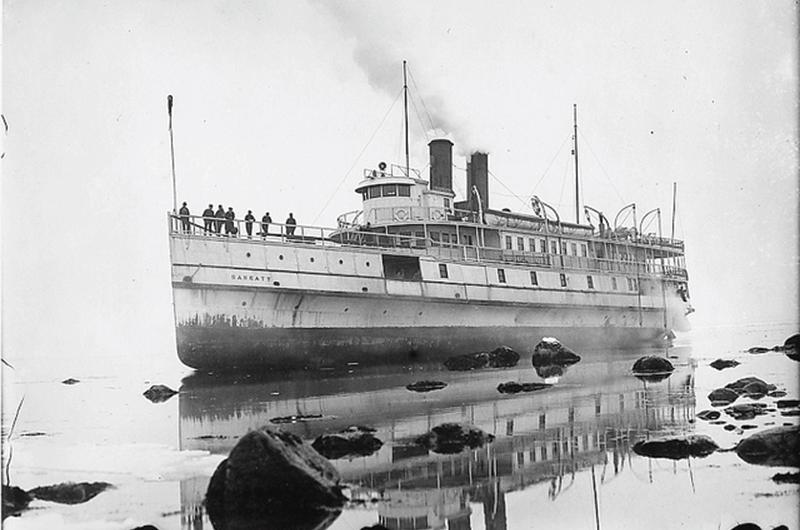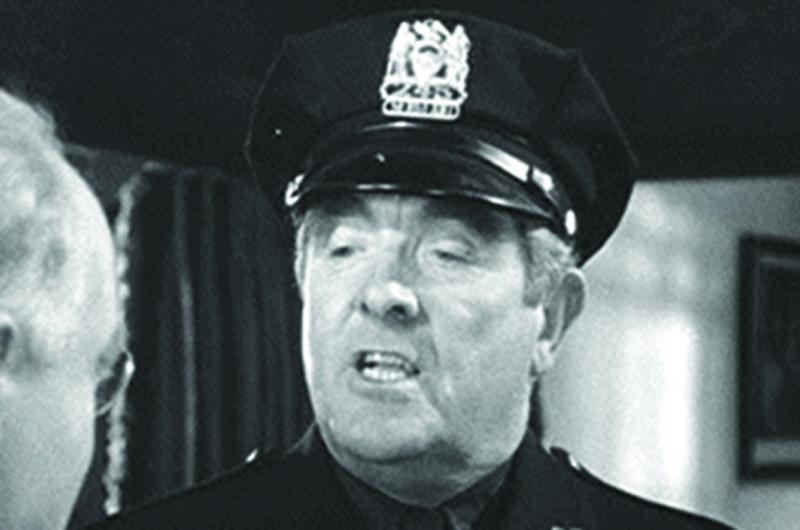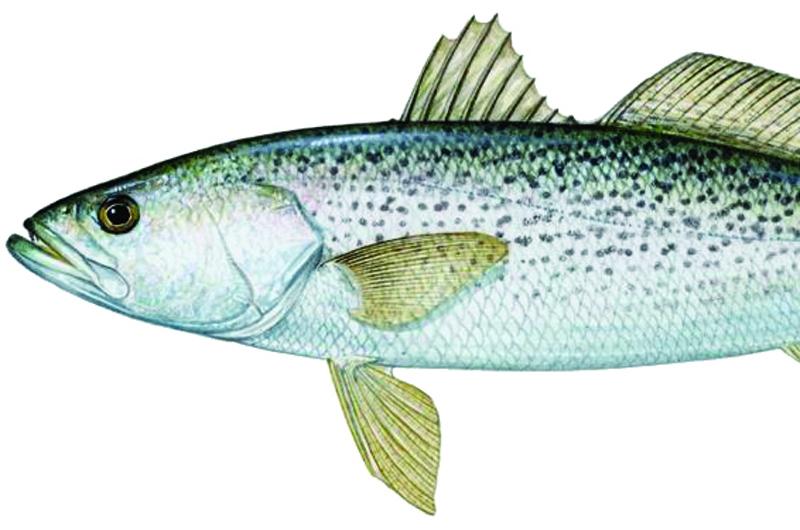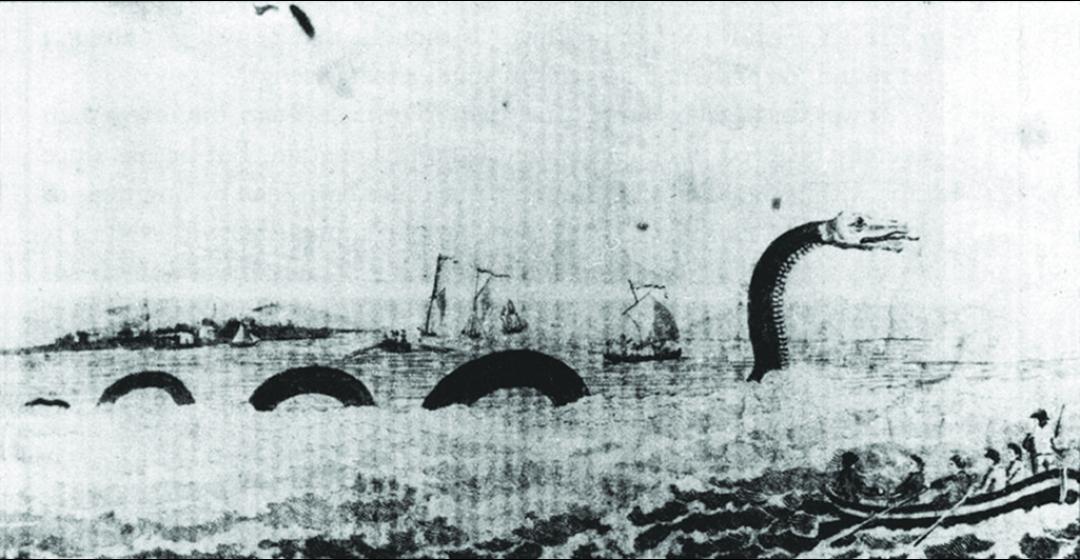Sampson’s Hill: The summit of Chappaquiddick, towering ninety-four feet above sea level. The hill may be named for the fourth son of Pakepanessoo, a sachem of the Chappaquiddick Wampanoag Tribe born in 1595. Later, the area was part of a reservation for the Chappaquiddick Tribe and there was a small “marine church” and a semaphore station on the hill. Exactly when the church was constructed is unknown, though “Reformation” John Adams, a Methodist evangelist, preached there as early as 1822. After the government distributed the reservation lands to individual tribal members in 1869, however, the building fell into disrepair and was ultimately torn down after the hurricane of 1938. The semaphore tower, which was constructed around 1845, was part of a string of stations used to relay reports of arriving vessels, via pivoting shutters, from Nantucket to Chappy to East Chop and eventually up to Boston. Lore has it that once an innocuous message was garbled along the line and, by the time it got to Boston, set off a panic that a whaleship had arrived in Nantucket with a smallpox-infected crew. Think of it as an early case of “you’re breaking up, lousy Island coverage, what’s that again?”

Sankaty: Beloved, if inauspiciously named, ferry that served the Islands from her construction in 1911 to 1924. Named for a point on an island reputed to be somewhere east of Cape Pogue, the propeller-driven Sankaty marked the end of the side-wheeler era of Island ferries. Traveling from New Bedford on a foggy night in February of 1917 she ran aground in Buzzards Bay with four passengers and eighty barrels of clams on board. She was repaired and went back into service until June 30, 1924, when she caught fire in New Bedford harbor and drifted up next to the whaleship Charles W. Morgan, setting that ship afire as well. The Morgan was saved, but the Sankaty sank and was sold, as is, for $1,000. Raised and rebuilt, she did duty as a ferry in Rockland, Maine, in Long Island Sound, and in Nova Scotia. During the Second World War, Sankaty served as a minesweeper in the Canadian navy. After the war she continued service as a ferry until 1964, when she was sold for scrap but sank again, this time for good, en route to Nova Scotia. Remarkably, the Sankaty sails again. In 1994 the Steamship Authority gave that name to a new freight ferry. As of press time, it’s still afloat.
Sea Serpent:
1. A large creature that appears periodically in the vicinity of the Vineyard and has been seen by reputable witnesses but never been photographed. According to a 1935 edition of the Vineyard Gazette, the first known report of the beast was made around the time of the American Revolution by “an officer of a British man-of-war, who gave a detailed description of the thing sighted from his ship, its speed, and apparent size. That it was a variety of lizard was unmistakable from his description, which stressed a long undulating neck and horselike head with long, tooth-lined jaws.” The same, or a similar creature was seen in the mid-1800s by an Edgartown packet captain whom the Gazette described as “a man who is averse to exaggeration of any kind, whose word is thoroughly reliable.” A similar report from the Nantucket Inquirer of a serpent seen by a whaler from that island off of Gay Head, mentions that “Captian C. with several others had a very near and distinct view of the monster and could not have mistaken it for any known species of fish. It may be proper to add that our informant is a person of indisputable veracity, very little inclined to deal in the marvelous and not at all disposed to indulge in idle gossip.” The thirty-foot creature that Captain Claude Wagner of Edgartown and his crew on the schooner Liberty saw off Noman’s Island in 1940 was described in the Gazette as “having a large head and long neck, this unique denizen of the deep, all black, was covered with big, lumpy spots. It carried a large dorsal fin, large tail, and made a noise like a blowing whale, although it did not spout water. ‘If I only had a camera,’ Captain Wagner said.” Indeed.
2. A work of serpentine floating folk art that has resided seasonally in Oak Bluffs’ Farm Pond since 1984. “Vanessa,” as the serpent is known, was created by Mindy Kendall, and is sometimes accompanied by offspring. The sculpture is the subject of a children’s book, entitled Vanessa: The Sea Serpent of Martha’s Vineyard.
Sebastian: Celebrated nicotine-addicted farm animal. Owned by Henry and Maud Allen, of the Allen Farm in Chilmark, the ram Sebastian was a popular attraction during the early 1900s when folks heading up-Island would see the tame beast hanging out in the fields, chewing on his tobacco. In 1984, years after his death, Sebastian made national news when the Allen Farm was involved in a land dispute. The family would ultimately win the case, and Judge Rudolph Kass stated his decision through the eyes of the popular ram. “Sebastian, the tobacco-chewing sheep, would have been disconcerted by this appeal,” he said.

Singing Cop, The: McNamara, Edward J., 1884–1944. The “Singing Cop” of movie and radio fame was a regular summer resident of Chilmark and West Tisbury in the 1930s and ’40s. It was he who introduced his great friend James Cagney to the Island, when he brought him along on a visit to the Vineyard home of another friend, the cartoonist Denys Wortman. He died of an apparent heart attack in a freight car while helping to transport Cagney’s horses from the Vineyard to California, and is buried in the West Tisbury cemetery.

Squeteague: Algonquian name for a game fish also known locally as weakfish or sea trout, but which is neither weak nor a trout, nor local very much anymore. Technically a member of the drum family, its body shape and beautiful speckled coloration are reminiscent of a trout. Though a fine fighter when properly hooked, its weak jaw membrane can tear away easily. Once plentiful enough in Vineyard waters to be included in the fall fishing derby, the population collapsed due to a combination of high fishing mortality rates and other poorly understood causes.





